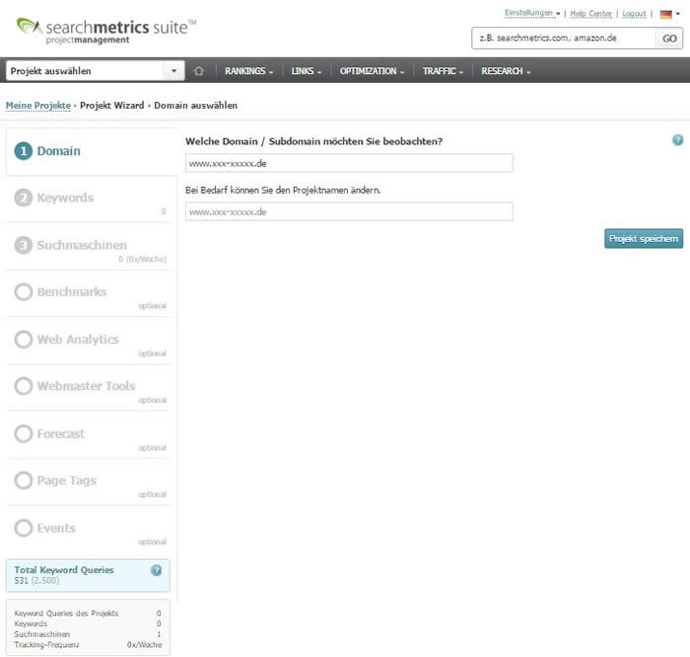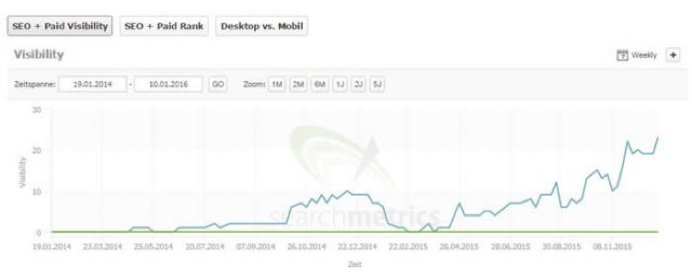
Building Trust with AI Content in a Skeptical Singapore Market
September 3, 2025
SEO Simplified: The 3 Core Strategies You Can’t Ignore
September 3, 2025Nothing is as constant as change when it comes to search engine optimization. This fact can make page operators feel desperate. A single Google update has the potential to wipe out weeks or months of labor. This results in a painful drop in visitor count, which, in the case of commercial websites, is accompanied by significant sales losses. In other situations, the necessity of constantly monitoring Google’s developments and regularly optimizing your own page might consume so much time that it becomes unprofitable to manage the website. This is where searchmetrics comes to the rescue, as it’s a powerful SEO tool that records a website’s characteristics in great detail, even over extended periods of time. The searchmetrics blog, for example, has a visual depicting Google modifications and their consequences, as well as information on current algorithm changes.
What Exactly Does Google Want?
Understanding Google’s latest features and modifying a page properly was what search engine optimization meant in the early days of the internet (think of keyword stuffing). Early SEO successes were frequently linked to a short-term profit from existing search engine flaws: those who knew how to take advantage of Google’s partial blindness had a significant advantage over their competition, independent of their website’s content, often at the expense of frustrated internet users. With the advancement of technology, Google’s goal began to shift more and more towards user friendliness.
As a result, the purpose of searchmetrics is not to assist website owners in manipulating the SERPs, but rather to assist them in completing the effort required to improve their ranking. The fact that removing flaws leads to a rise in Google rank is not the goal, but rather a logical result of the job done.
What is the Process of Searchmetrics?
Within its own database, searchmetrics collects data from several factors and automatically generates a useful analysis for each website. The ranking variables are based on the first three search results of the 300.000 most common search phrases, and are updated yearly by searchmetrics. This well-established database enables you to comprehend Google’s operation, learn about some of the algorithm’s secrets, and apply what you’ve learned to your website utilizing the searchmetrics suite.
The first step in using searchmetrics to get precise recommendations on how to improve your own page is to create a new project in the searchmetrics suite for your domain (image 1). After that, we can define some of the most relevant keywords for the page.

Searchmetrics employs its own research cloud, which includes a pool of 250 billion recent files, to conduct the analysis. External data sources, such as Google Analytics or Google Webmaster Tools, can optionally be linked to your searchmetrics account. It is recommended that you use this option to provide searchmetrics with as much information as possible.
An Analysis Highlights Strengths and Weaknesses
The initial analysis already provides insight into SEO visibility: a graph depicts how the website’s visibility has changed over time (image 2). Particularly intriguing: searchmetrics also allows you to directly compare your site to those of similar competitors, revealing the domain’s remaining potential.

The section SEO Research has a wealth of specific material that will aid in your understanding. What are your website’s direct competitors? What is the evolution of your keywords over time? What about the page’s visibility of possible subdomains or indices? How well-organized is the internal and external link structure, and how well-liked is the page on social media? (It is encouraged to incorporate additional tools for a more precise study in both of these aspects, such as the LinkResearchTools, for example.)
All of these, and many more, questions are answered by Searchmetrics, and not just for organic online searches: the program can also be used to assess and optimize the exposure of sponsored advertising (Google AdWords), as well as the commandments per click. However, searchmetrics expansions would be beneficial in this area. Currently, the ranking and development information from the SEO field are unquestionably the strengths.
Worthwhile Work
The list of problems, warnings, and information from searchmetrics that includes ideas for improvement can be quite frustrating: It appears to be a lot of work (picture 3). Working your way down the list over time, on the other hand, will result in a long-term increase in your rating. To quickly obtain the initial successes, it’s a good idea to keep an eye on the index of the respective improvement potential, which searchmetrics provides in the right column. Those who wish to dig deeper into optimization should start with the list and then move on to the “Keyword Optimization” and “Content Optimization” sections (the latter is only available via paid license).

A proper keyword research is recommended for the website’s future expansion. Searchmetrics may also assist with this: the keyword finder not only provides you with relevant search keyword suggestions, but it also generates SEO-friendly URLs for future subpages.
Conclusion
Searchmetrics provides a comprehensive view of all of a website’s search engine-relevant connections. It takes some time to learn how to use the tool. This is, nevertheless, a valuable investment because it allows a website owner to avoid many annoying detours. Because the information is updated frequently, the initial successes are seen quickly, ensuring that no drive is lost.


